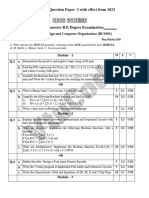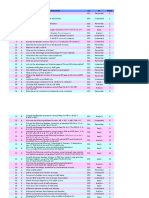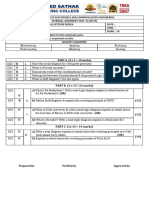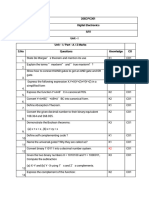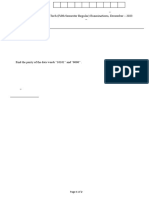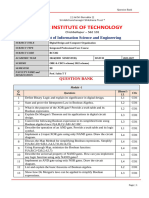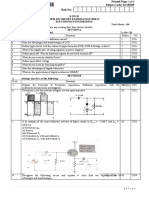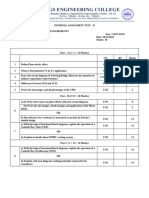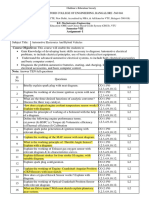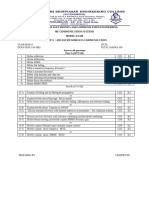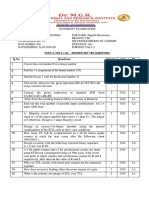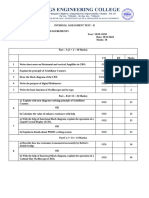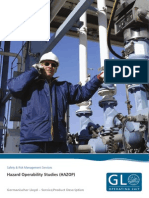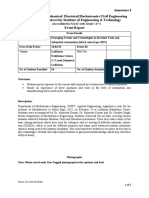0 ratings0% found this document useful (0 votes)
19 viewsInternal I Dpco
Internal I Dpco
Uploaded by
maheshwariCopyright:
© All Rights Reserved
Available Formats
Download as PDF, TXT or read online from Scribd
Internal I Dpco
Internal I Dpco
Uploaded by
maheshwari0 ratings0% found this document useful (0 votes)
19 views2 pagesOriginal Title
Internal i Dpco
Copyright
© © All Rights Reserved
Available Formats
PDF, TXT or read online from Scribd
Share this document
Did you find this document useful?
Is this content inappropriate?
Copyright:
© All Rights Reserved
Available Formats
Download as PDF, TXT or read online from Scribd
Download as pdf or txt
0 ratings0% found this document useful (0 votes)
19 views2 pagesInternal I Dpco
Internal I Dpco
Uploaded by
maheshwariCopyright:
© All Rights Reserved
Available Formats
Download as PDF, TXT or read online from Scribd
Download as pdf or txt
You are on page 1of 2
Register Number:
INTERNAL TEST I Date/Session 19.09.2024/FN Marks 50
Course code CS3351 Course Title Digital Principles and Computer Orgonization
Regulation 2021 Duration 1:30 Hours Academic Year 2024-2025
CSE, AI&DS,
Year II Semester III Department
CSE(CS), IT
COURSE OUTCOMES
CO1: To analyze and design combinational circuits.
CO2: To analyze and design sequential circuits
CO3: To understand the basic structure and operation of a digital computer.
CO4: To study the design of data path unit, control unit for processor and to familiarize with the
hazards.
CO5: To understand the concept of various memories and I/O interfacing.
Q.No. Question CO BTS
PART A
(Answer all the Questions 10 x 2 = 20 Marks)
1 Define Karnaugh map. CO1 R
2 What is a priority encoder? CO1 U
3 Define Combinational circuit. CO1 R
4 Draw the circuit for 2 to 1 multiplexer circuit. and Give functional b 2 * 1 MUX CO1 R
5 List the advantages and disadvantages of BCD code CO1 U
6 Draw 1:8 Demultiplexer using two 1:4 Demultiplexer. CO1 R
7 What is magnitude comparator? CO1 U
8 What is flip-flop? CO2 U
9 What is meant by triggering of Flip flop? CO2 U
10 Define SR Flip flop. CO2 U
PART B
(Answer all the Questions 5 x 13 = 65 Marks)
11a i.Design a 4 bit adder / subtractor circuit and explain.
ii.What is BCD adder? Design an adder to perform arithmetic addition of two CO1
decimal digits in BCD. U
OR
11b Simplify the following switching functions using Karnaugh map method and realize
expression using gates F(A,B,C,D) = Σ(0,3,5,7,8,9,10,12,15). CO1 A
12a Simplify the Boolean function in SOP and POS F(A,B,C,D)=∑m(0,1,2,5,8,9,10).
(ii) plot the following Boolean function in k-map and simplify it. F(w,x,y,z) =
∑m(0,1,2,4,5,6,8,9,12,13,14). CO1 A
OR
12b Explain the operation of JK FF, SR FF, T -FF and D-FF with a neat diagram. Also
discuss their characteristic equation and excitation table. CO2 E
Course Faculty HoD Principal
(P.MAHESHWARI) (S.PRABAKARAN) (Dr. M. VIJAYAKUMAR)
Register Number:
INTERNAL TEST I Date/Session 19.09.2024/FN Marks 50
Course code CS3351 Course Title Digital Principles and Computer Orgonization
Regulation 2021 Duration 1:30 Hours Academic Year 2024-2025
CSE, AI&DS,
Year II Semester III Department
CSE(CS), IT
COURSE OUTCOMES
CO1: To analyze and design combinational circuits.
CO2: To analyze and design sequential circuits
CO3: To understand the basic structure and operation of a digital computer.
CO4: To study the design of data path unit, control unit for processor and to familiarize with the
hazards.
CO5: To understand the concept of various memories and I/O interfacing.
Q.No. Question CO BTS
PART A
(Answer all the Questions 10 x 2 = 20 Marks)
1 Define the NOR operation with a truth table. CO1 R
2 Prove the following using Demorgan’ theorem [(X+Y)’+(X+Y)’]’= X+Y CO1 U
3 State and prove the consensus theorem. CO1 R
4 Simplify the expression: X = (A’+B)(A+B+D)D’. CO1 R
5 What is the significance of BCD code. CO1 U
6 What are Universal Gates? Why are they called so? CO1 R
7 Define Karnaugh map. CO1 U
8 What is edge triggered flip flop? CO2 U
9 What is meant by triggering of Flip flop? CO2 U
10 Define SR Flip flop. CO2 U
PART B
(Answer all the Questions 5 x 13 = 65 Marks)
11a Simply the function F(w,x,y,z)= ∑m(2,3,12,13,14,15) using K- map .Implement the
simplified using gates. CO1 U
OR
11b Design a code converter thet converts a 8421 to BCD code. CO1 A
12a Explain in detail about Encoders and Decoders. CO1 A
OR
12b Design and implement the S-R Flip flop using NOR,NAND Gates CO2 E
Course Faculty HoD Principal
(P.MAHESHWARI) (S.PRABAKARAN) (Dr. M. VIJAYAKUMAR)
You might also like
- Miele Dishwasher Service ManualDocument221 pagesMiele Dishwasher Service Manualthanhtungmac77% (22)
- Cec341-Set 1Document2 pagesCec341-Set 1HemapriyaNo ratings yet
- SITXFSA005 Slideshow.v1.0Document47 pagesSITXFSA005 Slideshow.v1.0Aaryann JyswalNo ratings yet
- Bank - Credit Risk ManagementDocument103 pagesBank - Credit Risk ManagementApoorv SrivastavaNo ratings yet
- Model Exam 2Document2 pagesModel Exam 2maheshwariNo ratings yet
- Internal Test II DpcoDocument2 pagesInternal Test II DpcomaheshwariNo ratings yet
- DIC MODELDocument4 pagesDIC MODELGAYATHRI RNo ratings yet
- CS3351 - ModelDocument2 pagesCS3351 - Modelrkkumar07No ratings yet
- bcs302 Set1 Model Question PaperDocument3 pagesbcs302 Set1 Model Question PaperMadhura N K50% (2)
- Cia 1Document2 pagesCia 1Asst Prof ECENo ratings yet
- Screenshot 2024-11-21 at 9.26.21 PMDocument2 pagesScreenshot 2024-11-21 at 9.26.21 PMsevisevithkumarNo ratings yet
- DD&CO Model Set1 Paper 2022 SchemeDocument2 pagesDD&CO Model Set1 Paper 2022 Schemeanveshrao024No ratings yet
- BCS302 Set 1Document2 pagesBCS302 Set 1Mina KimNo ratings yet
- Model QP Image ProcessingDocument4 pagesModel QP Image ProcessingLRani LoganathanNo ratings yet
- f QB CT1 DTMDocument2 pagesf QB CT1 DTMa28657798No ratings yet
- QB Code BcaDocument9 pagesQB Code Bcaeditingedge05No ratings yet
- Dpco Iat 1 QP Set1Document2 pagesDpco Iat 1 QP Set1Laks SadeeshNo ratings yet
- CN QP Pattern IIDocument2 pagesCN QP Pattern IISivakumar MuthuNo ratings yet
- Dpco QBDocument14 pagesDpco QBSiva KumarNo ratings yet
- BEC402 - POCS - Assignment 2Document2 pagesBEC402 - POCS - Assignment 2jbNo ratings yet
- DTSP UploadDocument2 pagesDTSP UploadUma MurugesanNo ratings yet
- DE question bankDocument3 pagesDE question bankminhajh301No ratings yet
- Ec3352 - Digital Systems Design Set Ii - Iat2Document1 pageEc3352 - Digital Systems Design Set Ii - Iat2venki08No ratings yet
- 21CS33 - ADE Question Bank 7876Document5 pages21CS33 - ADE Question Bank 7876AnshulNo ratings yet
- Dhanalakshmi Srinivasan: College of EngineeringDocument3 pagesDhanalakshmi Srinivasan: College of Engineeringhamsalakshmi cNo ratings yet
- 3630e772-7d45-4801-b968-a1864dbe8a4fDocument20 pages3630e772-7d45-4801-b968-a1864dbe8a4fMOHAMED IRREEF SNo ratings yet
- WSND Iat I (16-9-23)Document2 pagesWSND Iat I (16-9-23)karthikkumarenNo ratings yet
- ce-cat2Document2 pagesce-cat2moneeshbrNo ratings yet
- Question BankDocument7 pagesQuestion BankSwathi GuruswamyNo ratings yet
- Computer Networks 2023Document2 pagesComputer Networks 2023jit189111No ratings yet
- Model Question DSDocument2 pagesModel Question DSN. ANSGAR MARY ITNo ratings yet
- Iii Cse Ay 2022-2023 Odd Sem Model - I Set - 1Document2 pagesIii Cse Ay 2022-2023 Odd Sem Model - I Set - 1saran SanjayNo ratings yet
- DD Assignment 1Document2 pagesDD Assignment 1ASHFAK AppuNo ratings yet
- VTU exam Question Paper with Solution of BCS302 Digital Design and Computer Organization April-2024-Dr.Ciyamala Kushbu SDocument4 pagesVTU exam Question Paper with Solution of BCS302 Digital Design and Computer Organization April-2024-Dr.Ciyamala Kushbu SibikashitadebNo ratings yet
- Ec3352 - Digital Systems Design Set I - Iat2Document2 pagesEc3352 - Digital Systems Design Set I - Iat2venki08No ratings yet
- B.Tech-R22-Mid-Question-Bank-DE-1Document3 pagesB.Tech-R22-Mid-Question-Bank-DE-1harshvn08No ratings yet
- Dsa Iat 1Document3 pagesDsa Iat 1Shruthi SNo ratings yet
- Ddco Question BankDocument4 pagesDdco Question BankSabin TtNo ratings yet
- DAA Model Question PaperDocument2 pagesDAA Model Question PaperrevathiNo ratings yet
- Btech It 5 Sem Compiler Design Kit052 2021Document1 pageBtech It 5 Sem Compiler Design Kit052 2021Aanchal SinghNo ratings yet
- Sathyabama: Register NumberDocument3 pagesSathyabama: Register NumberBoopalanElumalaiNo ratings yet
- Eiot Int 1 QPDocument4 pagesEiot Int 1 QPKavi PriyaNo ratings yet
- Signal 2Document2 pagesSignal 2imvuuser1No ratings yet
- CS Model (SET 1)Document2 pagesCS Model (SET 1)mahameena.kcetNo ratings yet
- Dpco ModelDocument2 pagesDpco ModelprabakaranNo ratings yet
- Cs3351 - Dpco - Int 2 - Set 1Document1 pageCs3351 - Dpco - Int 2 - Set 1anletsheenuNo ratings yet
- A4 23 24 EvenDocument1 pageA4 23 24 EvenbzmxnfnphNo ratings yet
- Smt Question Papper Iat 2(1)Document2 pagesSmt Question Papper Iat 2(1)ramachandran.bmeNo ratings yet
- EC 3352 DIGITAL SYSTEM DESIGNDocument1 pageEC 3352 DIGITAL SYSTEM DESIGNlogesh.100rNo ratings yet
- Dpco QBDocument3 pagesDpco QBmhvvfvkr50No ratings yet
- Module-II DE QUESTION BANKDocument2 pagesModule-II DE QUESTION BANKakshithyeetNo ratings yet
- AEHV Assignment 1Document2 pagesAEHV Assignment 1wikanav385No ratings yet
- UG I YR - MODEL QP Template ODD SEM (100 Mark Pattern) WITH CO PODocument3 pagesUG I YR - MODEL QP Template ODD SEM (100 Mark Pattern) WITH CO POArunaNo ratings yet
- Wearable devices question paperDocument2 pagesWearable devices question paper66kanagavalliNo ratings yet
- PG MODELDocument2 pagesPG MODELGAYATHRI RNo ratings yet
- Q.No Questions Marks CO BL: Part-A (10X 2 20) - Answer Any Ten QuestionsDocument2 pagesQ.No Questions Marks CO BL: Part-A (10X 2 20) - Answer Any Ten QuestionsKavin MartinNo ratings yet
- Part A: (Government Aided Autonomous Institution)Document2 pagesPart A: (Government Aided Autonomous Institution)Dr.V.R.VelmuruganNo ratings yet
- 20itpc302 - Software EngineeringDocument3 pages20itpc302 - Software EngineeringHARIBABU N SEC 2020No ratings yet
- CU4071 Ia1Document1 pageCU4071 Ia1HARIPRASATH ECENo ratings yet
- Sensor Int1 2024Document2 pagesSensor Int1 2024pooranimceNo ratings yet
- I) All Questions Are Compulsory. Ii) Figure To The Right Indicate Full Marks. Iii) Assume Suitable Data Wherever NecessaryDocument1 pageI) All Questions Are Compulsory. Ii) Figure To The Right Indicate Full Marks. Iii) Assume Suitable Data Wherever Necessarythamizharasi arulNo ratings yet
- SMT QUESTION PAPPER CAT 1 (2)Document1 pageSMT QUESTION PAPPER CAT 1 (2)ramachandran.bmeNo ratings yet
- Physics and Technology of Crystalline Oxide Semiconductor CAAC-IGZO: Application to DisplaysFrom EverandPhysics and Technology of Crystalline Oxide Semiconductor CAAC-IGZO: Application to DisplaysNo ratings yet
- Click To Edit Master Subtitle Style: Submitted By: Tarun DodaDocument22 pagesClick To Edit Master Subtitle Style: Submitted By: Tarun DodaTarun DodaNo ratings yet
- Class 8 Book List 2024-25Document1 pageClass 8 Book List 2024-25rahulkumar200721No ratings yet
- Hazard Operability StudiesDocument8 pagesHazard Operability StudiesPendi Adi MertaNo ratings yet
- 2 Academic ProcrastinationDocument8 pages2 Academic ProcrastinationRUHAYANAWENo ratings yet
- Gravitational Coleman-Weinberg Potential and It's Finite Temperature CounterpartDocument11 pagesGravitational Coleman-Weinberg Potential and It's Finite Temperature CounterpartcrocoaliNo ratings yet
- COLLECTIONSDocument45 pagesCOLLECTIONSvarshithaga3052003No ratings yet
- Bunny Cakes Pre-Student Teaching Lesson 2Document6 pagesBunny Cakes Pre-Student Teaching Lesson 2api-582642472No ratings yet
- Immediate download Ellis and Calne's Lecture Notes in General Surgery, 14e (Mar 6, 2023)_(1119862485)_(Wiley-Blackwell) 14th Edition Davies ebooks 2024Document66 pagesImmediate download Ellis and Calne's Lecture Notes in General Surgery, 14e (Mar 6, 2023)_(1119862485)_(Wiley-Blackwell) 14th Edition Davies ebooks 2024sauyukgoks100% (2)
- PricelineDocument2 pagesPricelineabdelamuzemil8No ratings yet
- Resource Management Strategy of Limestone by Evolution of Nil Waste ProcessDocument3 pagesResource Management Strategy of Limestone by Evolution of Nil Waste ProcessravibelavadiNo ratings yet
- Department of Education: Caraga Region Schools Division of Surigao Del SurDocument18 pagesDepartment of Education: Caraga Region Schools Division of Surigao Del Surnoel bandaNo ratings yet
- Jioint Declaration FormDocument1 pageJioint Declaration FormRohit GuptaNo ratings yet
- Makalah Tefl IIDocument10 pagesMakalah Tefl IINa Na ChriesnaNo ratings yet
- Unit 14 Rules and WarningsDocument6 pagesUnit 14 Rules and WarningsMora SestoNo ratings yet
- Cheers and Tears - Lana LaLandDocument52 pagesCheers and Tears - Lana LaLandtrumpcoke02No ratings yet
- Alvas CollegeDocument116 pagesAlvas CollegeEnglish language and literature in kannadaNo ratings yet
- C Standard Library Tutorial PDFDocument253 pagesC Standard Library Tutorial PDFJolly RogerNo ratings yet
- Cover Letter For Warner BrosDocument5 pagesCover Letter For Warner Brosf1vijokeheg3100% (2)
- Lesson 7 EnergyDocument16 pagesLesson 7 EnergyprathmfedNo ratings yet
- Role of Government in Corporate GovernanceDocument2 pagesRole of Government in Corporate GovernanceIshanDograNo ratings yet
- MTR 6Document1 pageMTR 6Nitin VishwakarmaNo ratings yet
- XP112 XP115 Om en V1.1Document12 pagesXP112 XP115 Om en V1.1Leandro PortelaNo ratings yet
- MB1-1-Bose - Reliability and Accuracy of Ship Powering Performance ExtDocument8 pagesMB1-1-Bose - Reliability and Accuracy of Ship Powering Performance ExtJayasankar PillaiNo ratings yet
- Iop851-W00C1: Poe Industry Ap-RouterDocument2 pagesIop851-W00C1: Poe Industry Ap-RouterBob YuNo ratings yet
- Death of A SalesmanDocument123 pagesDeath of A SalesmanlwardNo ratings yet
- Daniel Jones: A Famous British PhoneticianDocument10 pagesDaniel Jones: A Famous British PhoneticianОксана КачуловаNo ratings yet
- Annexure-I Department of Mechanical/ Electrical/Mechatronics/Civil Engineering Chitkara University Institute of Engineering & Technology Event ReportDocument3 pagesAnnexure-I Department of Mechanical/ Electrical/Mechatronics/Civil Engineering Chitkara University Institute of Engineering & Technology Event ReportAbhishek KumarNo ratings yet










